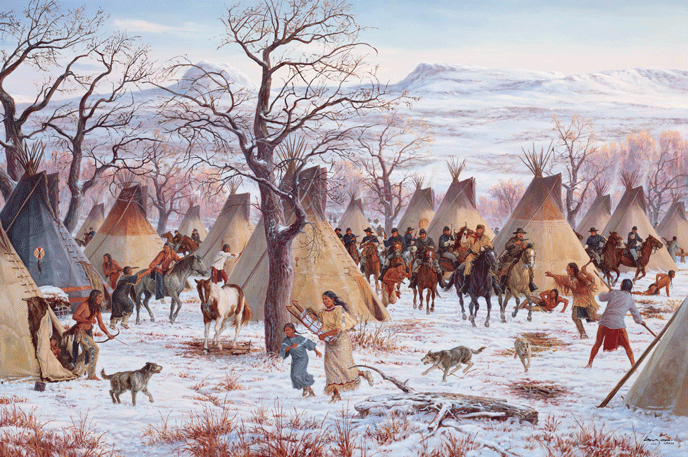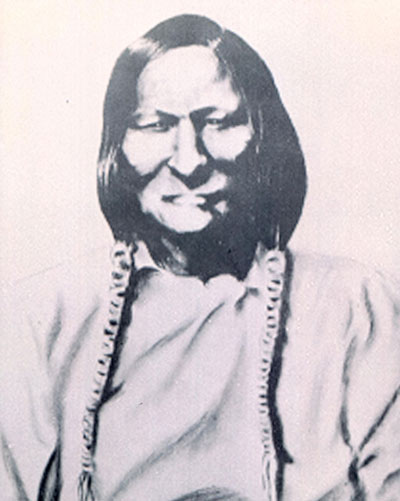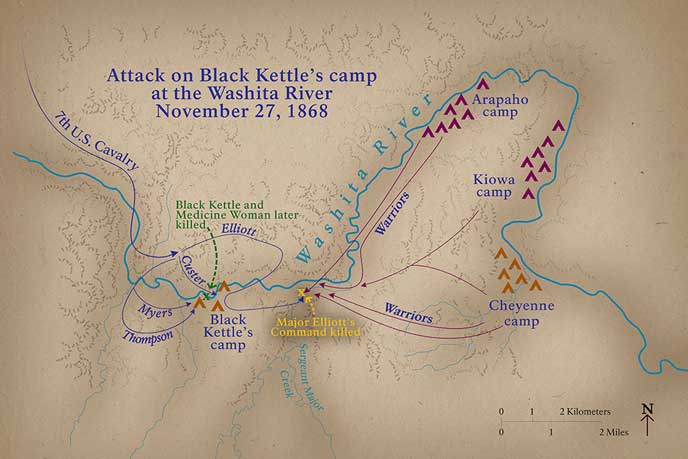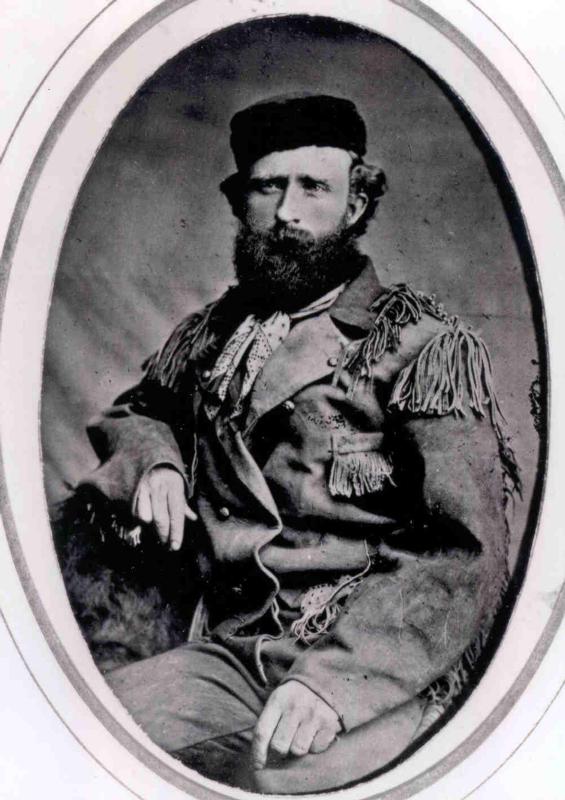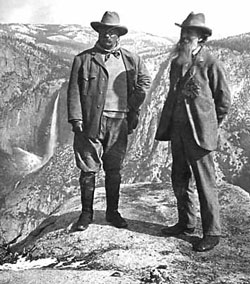The most famous brothers in the 20th century
surely are Orville and Wilbur Wright. The NPS has two major units dedicated to
their revolution in transportation—one at Kitty Hawk, North Carolina where they
first accomplished powered flight and the other at Dayton, Ohio which contains
five units across the city. Here’s their story.
Neither Wilbur (1867-1912) nor Orville (1871-1948) earned
their high school diplomas, but instead invented from an early age. In 1889, they
started a printing business, first as newspaper publishers and then as
commercial printers. One of their early clients was Paul Laurence Dunbar, a
celebrated African-American poet and writer.
 |
| Wright Brothers printers (from exhibit at visitors' center) |
Looking for new business opportunities, in 1892 the brothers
opened a repair shop to tap into the growing popularity of bicycles. By 1896, they
were building small numbers of their own brand, called the Hercules. Their
printing and bicycle businesses allowed them both the time and the machine shop
to pursue another interest. Spurred on by news of experiments in flight, Wilbur
in 1899 wrote the Smithsonian Institute and asked for any information about
aeronautics. More about the Smithsonian later.
They flew kites around Dayton and asked the U.S. Weather
Bureau where reliable winds blew. In 1900, Wilbur and Orville took their
gliders and camped out at Kitty Hawk on the Outer Banks of North Carolina. From
watching birds fly, they developed a concept called Wing Warping that torqued
the wings to allow some control over flight. Nonetheless, progress was slow that
year and the next and on the train home from the 1901 experiments at Kitty
Hawk, Wilbur said to Orville that man would not fly for 1,000 years.
That winter, they built a wind tunnel at their bike shop and
conducted over 200 experiments on the shape of wings. They also worked on creating
a light weight engine for their plane. They returned to Kitty Hawk in 1902, set
up shop in a tent on the wind swept dunes, and completed between 700 and 1,000
flights with their glider that fall. This plane “embodied their core invention,
a complete system of flight control…. The 1902 glider represented a stunning
breakthrough.” In fact, when they applied for a patent several years later, they
submitted the plans for the glider and its controls instead of their powered
plane.[1]
 |
| Replica of the 1902 glider (from exhibit at visitors' center |
The Wrights returned to Kitty Hawk on September 26, 1903. On
December 17th, Wilbur and Orville traded off climbing aboard their bi-plane for
short powered flights. On his second flight, Wilbur traveled 852 feet and
remained airborne for almost a minute of flight. The Wrights had attained the
long sought dream of human flight. They returned to Dayton and decided to
continue flight experiments closer to home. They had proved that humans could
fly. They now needed to create a practical plane that could be controlled in
the air.
 |
| Catapult and track at Huffman Field (Photo by Hunner) |
Winds at Huffman Prairie Field north of Dayton did not blow
as hard as at Kitty Hawk. To compensate, in 1904 they built a catapult to fling
their planes into the air, much like aircraft carriers use today. The challenge
in creating a practical plane entails finding ways to control the three
directions that a plane must navigate—pitch or up and down, right and left, and
yawl or roll. Small wings called elevators control the pitch, rudders point the
plane right or left, and wing warping controls the roll of a plane.
 |
| The three directions that planes move (From exhibit at visitors' center) |
Failures plagued the Wright Brothers, including accidents
like the one when Orville lost control and crashed into the field at 30 mph. Finally, on October 5, 1905, Wilbur took off
in a plane of fabric and wood and stayed aloft for almost forty minutes covering
twenty-three miles in circles around Huffman field. The brothers then they
halted all of their flights since they feared that others would steal their
invention and applied for patents to protect their invention. The U.S. granted
them a patent in 1906 which lasted until 1923. Others challenged their monopoly
as we shall see. The next time the brothers flew (and the first time as a
public demonstration) was in France on August 8th, 1908 when they
kept their plane up for an hour and forty-five minutes. They became
international heroes, feted at home and abroad.
 |
| Path of flight on October 5th (From exhibit at Huffman Field) |
At Huffman Prairie Field on the day I visited, Robert
Petersen stood next to a replica of an early Wright Brothers’ plane. A gifted
story teller, Robert impressed on the visitors that the day of the importance
of this field for the Wrights. It gave them a nearby place to test their models
and so was the world’s first air port. The key successes came in 1905. The year
before, they had flown 105 flights and were aloft for forty-nine minutes. In
1905, they conducted fifty flights and were in the air for 262 minutes. I asked
Robert why Dayton was the right place at the right time for this invention.
First, he said that few places in the U.S. had the ability to cast aluminum
block engines, but Dayton did. He also stated that Dayton was Invention City—it
had more patents per capita than anywhere else in the country. He reeled off
some of the inventions that happened here—the electric starter for cars, air
conditioning, fast drying paint, the bar code, the step ladder, pop top openers
for cans, and the Yellow Pages. The National Cash Register (NCR) not only
invented the mechanical cash register in Dayton but it also served as an
incubator for people who later created Frigidaire, Delco, IBM, and Lear Jet. Looking
out over Huffman Prairie Field, he concluded: “Kitty Hawk was the first powered
flight. Here is the rest of the story. There are very few places where you can
stand that transformed the world. This is one of those places. I can tell all
of world history right here.”
 |
| NPS ranger Robert Petersen at Huffman Field (Photo by Hunner) |
The Wright Brothers’ success lit a fire under aeronautic
innovators around the world. Now that the Wrights had proved that human flight was
possible, innovations burst into the air like a covey of quail spooked out of a
bush. One of the most prolific innovators was motorcycle pioneer Glenn Curtiss.
Here are some of his accomplishments on the heels of the Wrights. The most
important was that Curtiss put ailerons on his planes which allowed for greater
control of the flying machines. Using the ailerons, Curtiss racked up an
impressive list of firsts in aviation history: he flew the first public flight of a plane in
the U.S. in 1908; he built the first commercially available airplane in 1909;
he flew from Albany to New York City, a long distance record at the time, in
1910; he earned the first pilot’s license in 1911; he built the first plane that
took off from water in 1911 and developed the first flying boat in 1912; he
invented the first dual pilot control in 1911; he created the first retractable
landing gear in 1911; he produced 6,000 Jenny airplanes for the Allies in World
War I; and his Curtiss NC-4 was the first plane to fly across the Atlantic with
stops in the Azores in 1919. The Glenn Curtiss Museum in Hammondsport, N.Y. celebrates
these accomplishments.
 |
| Glenn Curtiss at controls of his early plane (From exihibit at Curtiss Museum) |
So why are there two National Park units dedicated to the
Wrights, an Air Force Base named after them, and we all know about Wilbur and
Orville but not about Glenn? I asked this to the people at the Curtiss Museum.
The best answer came from the crew renovating a P-40, the Warhawk fighter, in a
workshop behind the main building. Their theory is that the Wrights had
deposited their Kitty Hawk plane on display in London. Samuel Pierpont Langley,
the director of the Smithsonian Institution, and an aeronautics pioneer in his
own right, wanted to secure the plane for the museum. The deal he brokered with
the Wrights was that they would donate their plane but the Smithsonian would
not mention the accomplishments of Curtiss. As one staff member said when I
asked why the lack of recognition, “It’s political.”
 |
| An advertisement for Curtiss's school and pontoon plane (From exhibit at Curtiss Museum) |
Tom Crouch in his First
Flight book covers the controversy. In 1914, the Smithsonian had loaned
Director Langley’s unsuccessful plane the
Aerodrome to Curtiss who rebuilt and flew it. Then the Smithsonian displayed
it as the first machine capable of flight. In 1928, Orville sent their 1903
plane to London’s Science Museum, vowing to keep it there until the Smithsonian
acknowledged that the Wright plane was, well the right plane. Finally in 1942,
the museum admitted that Langley’s plane was not the first, and the world’s
first airplane was unveiled at the Smithsonian on Dec. 17, 1948.[2]
Was there an agreement to downplay Curtiss’s innovations? I can’t say.
The Wright Brothers’ had little success in advancing
aeronautics after they proved that human flight was possible. They fought with
Curtiss and others over infringements on their invention, and some say that
Wilbur died in 1919 stressed over these battles. Whatever the subsequent
history of aviation, Wilbur and Orville opened the door for human flight and
changed our world. Their invention ranks as one of the most revolutionary ones
of all time.
The Wright Brothers National Monument at Kitty Hawk, North
Carolina was authorized as Kill Devil Hill Monument March 2, 1923, transferred
from the War Department to NPS in 1933, and renamed on December 4, 1953.The
Dayton Aviation Heritage National Historical Park was created on Oct. 16, 1992
to preserve the sites in Dayton connected to the Wright Brothers and to honor Paul
Laurence Dunbar, a renowned African-American poet and writer who had the
Wrights print some of his books.
Next Monday evening, I will post a new blog on Hopewell
Culture National Historical Park and the 2,000 year old mounds preserved at
that site.












